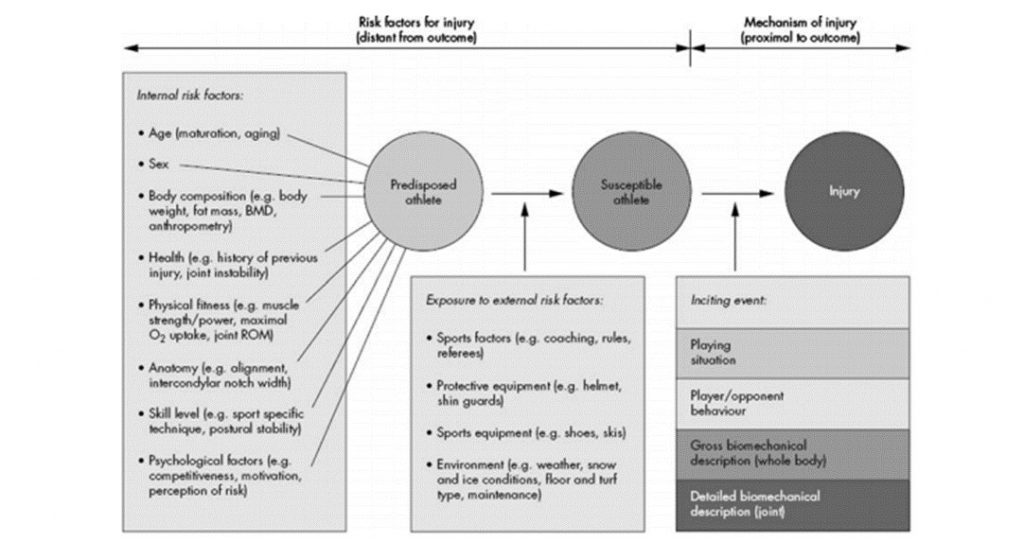Tiger Woods - Can he or Can’t he WIN AGAIN
- Would you place your money on Tiger?
- What are the odds?
- What can you learn from his mistakes?
 Biomechanics is generally explained as the study of movement and the external forces (such as gravity or ground reaction force or air resistance) that help to create movement. However, in golf, any movement created is muscular, with the muscles of the legs pushing off the ground and the muscles of the hands controlling the club. If that is the case, surely an understanding of the design of the human body – its muscles as well as its joints, tendons and ligaments, is more important than an understanding of external forces which the human body may or may not be able to withstand the application of? A study of musculoskeletal structure, shows us that inconsistency and injury are two sides of the same coin. When the body’s major joints are poorly positioned, they make compromises during the downswing, somehow managing to deliver the club to the ball - in any possible manner. Even though modern golfers work out in order to create muscle-strength (and hypertrophy or bulking up), the supporting structures (tendons, ligaments, cartilage) do not have much of a blood supply (and sometimes none) and do not strengthen in proportion, becoming the weak link in inefficient, violent, aggressive movements (which we know Tiger has always made!) So, what sort of swing changes have his previous coaches recommended and how did they affect his body? His knee injury, whether or not from golf, was certainly exacerbated by being told to “snap it out of the way” or words to that effect. Research has shown that any movement which forcefully shifts weight onto the knee while decelerating and straightening it out, on a repeated basis, is the main mechanism of anterior cruciate ligament (ACL) tears. [For a serious student of injury, the following is a great paper: https://scholar.google.com/scholar?hl=en&q=acl+injury+in+soccer+players+part+1+mechanism&btnG=&as_sdt=1%2C44&as_sdtp= ] Then, from looking at the swing he has worked on in recent years, he has made an exaggerated a squat-jump movement during his downswing. This puts greater load on the spine. When combined with the steep tilt of his shoulder-plane during the downswing (reduced since late last year) and a fast rotation of the hips towards target, it is possible for spinal disc herniation to occur, which is what Tiger next suffered after the ACL surgeries. The only way for Tiger Woods to continue on in competitive golf is through a thorough analysis of all his predisposing internal factors, joint by joint, then having him make anatomically meaningful swing changes. It is NOT enough to merely address the current body-region of injury. He should use a swing which will prevent recurrence of old injuries as well as reduce the likelihood of new ones.
Biomechanics is generally explained as the study of movement and the external forces (such as gravity or ground reaction force or air resistance) that help to create movement. However, in golf, any movement created is muscular, with the muscles of the legs pushing off the ground and the muscles of the hands controlling the club. If that is the case, surely an understanding of the design of the human body – its muscles as well as its joints, tendons and ligaments, is more important than an understanding of external forces which the human body may or may not be able to withstand the application of? A study of musculoskeletal structure, shows us that inconsistency and injury are two sides of the same coin. When the body’s major joints are poorly positioned, they make compromises during the downswing, somehow managing to deliver the club to the ball - in any possible manner. Even though modern golfers work out in order to create muscle-strength (and hypertrophy or bulking up), the supporting structures (tendons, ligaments, cartilage) do not have much of a blood supply (and sometimes none) and do not strengthen in proportion, becoming the weak link in inefficient, violent, aggressive movements (which we know Tiger has always made!) So, what sort of swing changes have his previous coaches recommended and how did they affect his body? His knee injury, whether or not from golf, was certainly exacerbated by being told to “snap it out of the way” or words to that effect. Research has shown that any movement which forcefully shifts weight onto the knee while decelerating and straightening it out, on a repeated basis, is the main mechanism of anterior cruciate ligament (ACL) tears. [For a serious student of injury, the following is a great paper: https://scholar.google.com/scholar?hl=en&q=acl+injury+in+soccer+players+part+1+mechanism&btnG=&as_sdt=1%2C44&as_sdtp= ] Then, from looking at the swing he has worked on in recent years, he has made an exaggerated a squat-jump movement during his downswing. This puts greater load on the spine. When combined with the steep tilt of his shoulder-plane during the downswing (reduced since late last year) and a fast rotation of the hips towards target, it is possible for spinal disc herniation to occur, which is what Tiger next suffered after the ACL surgeries. The only way for Tiger Woods to continue on in competitive golf is through a thorough analysis of all his predisposing internal factors, joint by joint, then having him make anatomically meaningful swing changes. It is NOT enough to merely address the current body-region of injury. He should use a swing which will prevent recurrence of old injuries as well as reduce the likelihood of new ones.  So, until such time that Tiger and his team understand how important it is to bring on board golf coaches with an academic education in all the movement sciences – who can thus serve as the “air-traffic-controller” between his surgeons, physiotherapists, chiropractors, fitness coaches, nutrition experts and more - it might just be the case that @PatPerezGolf is right!
So, until such time that Tiger and his team understand how important it is to bring on board golf coaches with an academic education in all the movement sciences – who can thus serve as the “air-traffic-controller” between his surgeons, physiotherapists, chiropractors, fitness coaches, nutrition experts and more - it might just be the case that @PatPerezGolf is right!